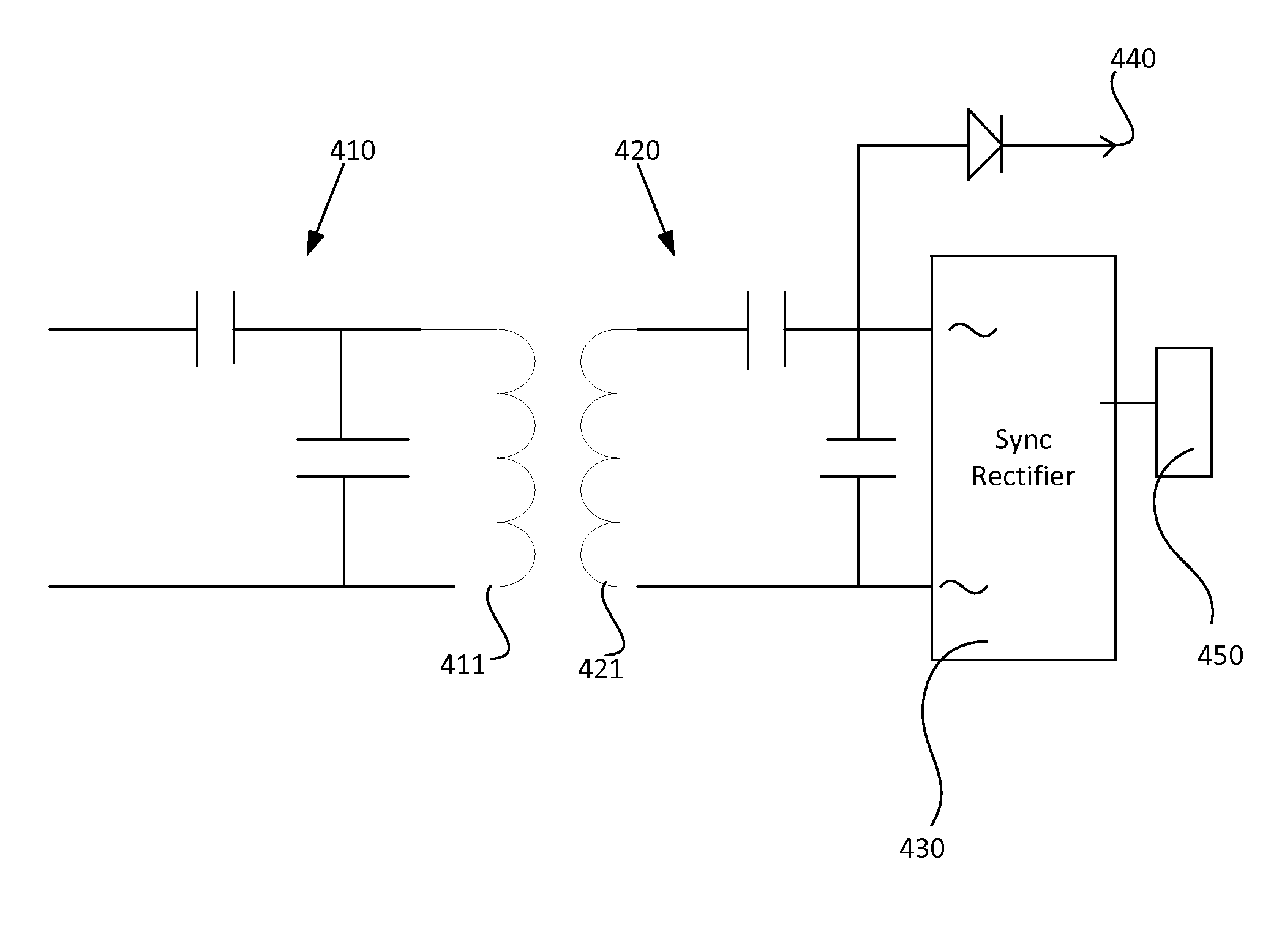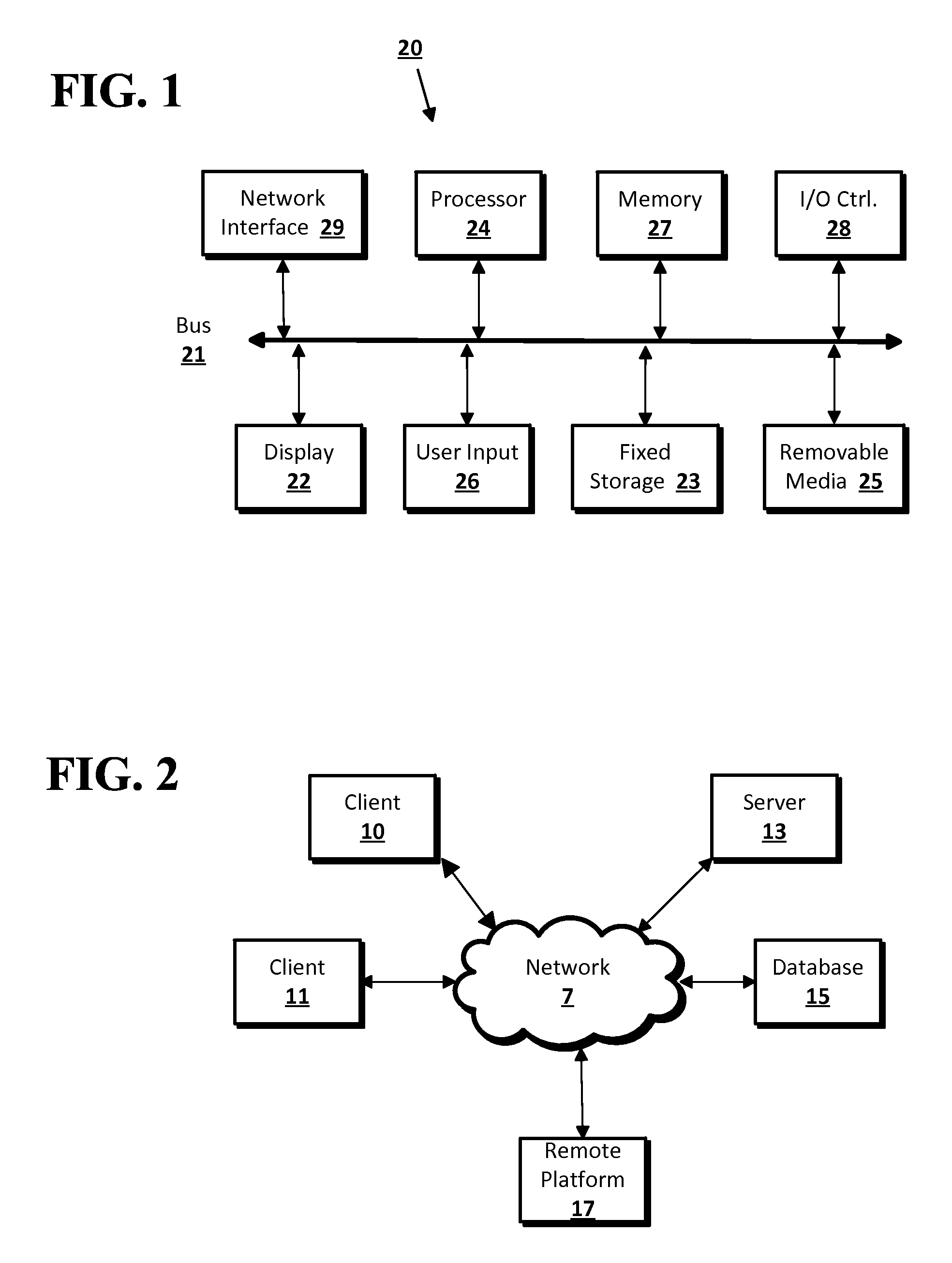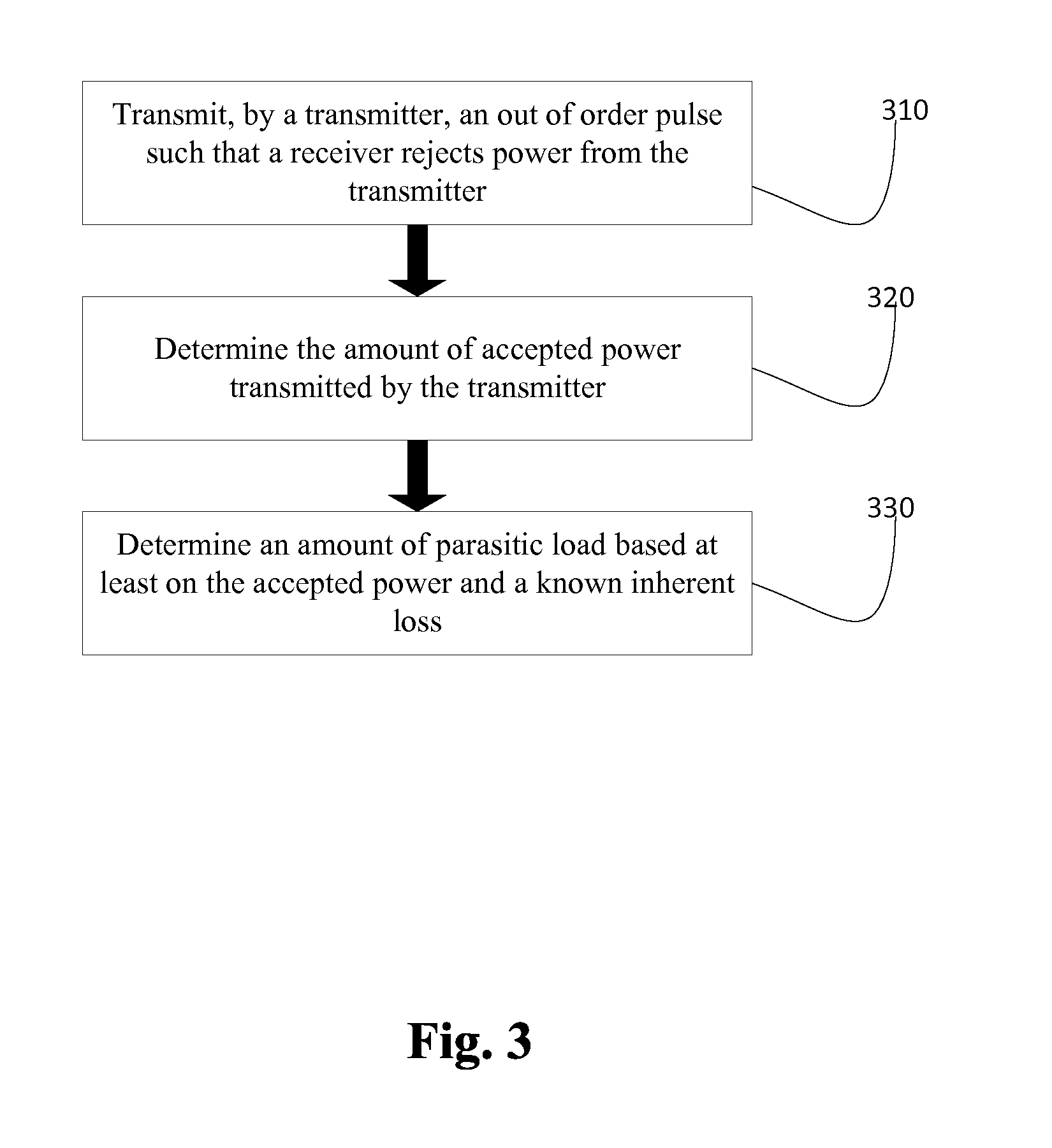Foreign Object Detection Method for Wireless Charging Systems
a detection method and wireless charging technology, applied in the direction of batteries, exchanging data chargers, inductances, etc., can solve the problems of reducing the efficiency of arrangement and causing the heat of nearby conductive objects
- Summary
- Abstract
- Description
- Claims
- Application Information
AI Technical Summary
Benefits of technology
Problems solved by technology
Method used
Image
Examples
Embodiment Construction
[0013]Traditional, wireless charging systems use alternating magnetic fields to transfer power between a transmitter and a receiver by inducing current in the receiver. These magnetic fields can also induce parasitic currents in nearby conductors, typically metal bodies, causing heating of the conductor and a loss of available power in the inductive charging system, thus reducing efficiency. It may be beneficial to know the amount of parasitic loss so that an appropriate response action can be taken based on the amount of loss. As an example, if the parasitic loss is an above a predetermined threshold, then the inductive power transfer may be placed on hold until the external conductor is removed from the environment. Parasitic loads may be unfavorable for any applicable reason such as an undesirable amount of wasted power, unsafe amount of heat transferred to the external conductor, and / or an insufficient amount of power provided to the receiver such that the receiving device canno...
PUM
 Login to View More
Login to View More Abstract
Description
Claims
Application Information
 Login to View More
Login to View More - R&D
- Intellectual Property
- Life Sciences
- Materials
- Tech Scout
- Unparalleled Data Quality
- Higher Quality Content
- 60% Fewer Hallucinations
Browse by: Latest US Patents, China's latest patents, Technical Efficacy Thesaurus, Application Domain, Technology Topic, Popular Technical Reports.
© 2025 PatSnap. All rights reserved.Legal|Privacy policy|Modern Slavery Act Transparency Statement|Sitemap|About US| Contact US: help@patsnap.com



